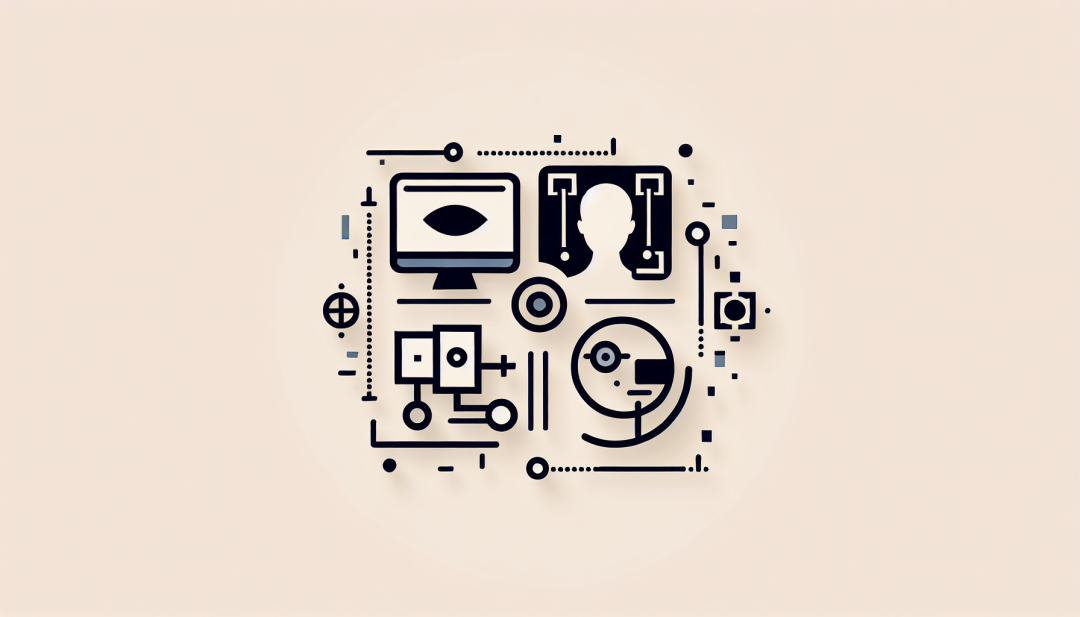 本专题致力于深入探讨如何通过SpringBoot3.x框架与OpenCV库实现高效的人脸检测和人脸识别系统。通过系统化的10篇文章,从基础概念到高级应用,结合代码示例和实战案例,逐步引导大家掌握从零开始构建完整人脸检测与识别系统的全过程。
本专题致力于深入探讨如何通过SpringBoot3.x框架与OpenCV库实现高效的人脸检测和人脸识别系统。通过系统化的10篇文章,从基础概念到高级应用,结合代码示例和实战案例,逐步引导大家掌握从零开始构建完整人脸检测与识别系统的全过程。
基于 Spring Boot 的实时人脸检测和识别系统
随着人工智能和计算机视觉技术的不断发展,实时人脸检测和识别技术在安防、考勤、门禁控制等领域的应用越来越广泛。实现一个高效、稳定的实时人脸检测和识别系统,需要解决包括延迟、数据一致性、并发处理等相关技术难题。本文将深入讲解如何基于Spring Boot和WebSocket实现一个实时人脸检测和识别系统,并结合具体代码示例进行讲解。
基本需求和挑战
-
实时检测和识别需求
-
高实时性:视频流中的人脸图像需要被及时检测和识别,并同步到客户端。
-
高准确性:检测和识别算法需要具有高准确率,减少误识别和漏识别现象。
-
-
技术挑战
-
系统延迟:在高并发访问下,需要保证检测和识别的快速响应,降低系统延迟。
-
数据一致性:在多客户端并发访问和多个传感器同时上传数据时,确保数据一致性和同步。
-
扩展性:系统需要具备良好的扩展性,能够处理不断增加的数据量和访问量。
-
实现方案
1. 使用Spring Boot和WebSocket实现实时人脸检测
依赖配置
在项目的 pom.xml 文件中添加以下依赖,以支持Spring Boot和WebSocket:
<dependency>
<groupId>org.bytedeco</groupId>
<artifactId>javacpp</artifactId>
<version>1.5.5</version>
</dependency>
<dependency>
<groupId>org.bytedeco</groupId>
<artifactId>javacv-platform</artifactId>
<version>1.5.5</version>
</dependency>
<dependency>
<groupId>org.bytedeco</groupId>
<artifactId>dlib-platform</artifactId>
<version>19.21.1-1.5.5</version>
</dependency>
<dependency>
<groupId>net.sourceforge.tess4j</groupId>
<artifactId>tess4j</artifactId>
<version>4.5.3</version>
</dependency>
WebSocket配置
创建 WebSocketConfig 配置类,实现 WebSocket 的配置:
import org.springframework.context.annotation.Configuration;
import org.springframework.web.socket.config.annotation.EnableWebSocket;
import org.springframework.web.socket.config.annotation.WebSocketConfigurer;
import org.springframework.web.socket.config.annotation.WebSocketHandlerRegistry;
@Configuration
@EnableWebSocket
public class WebSocketConfig implements WebSocketConfigurer {
@Override
public void registerWebSocketHandlers(WebSocketHandlerRegistry registry) {
// 注册WebSocket处理器
registry.addHandler(new FaceDetectionHandler(), "/faceDetection")
.setAllowedOrigins("*"); // 允许所有域名的跨域请求
}
}
视频流处理
使用 OpenCV 库进行视频流处理和人脸检测:
import org.opencv.core.Mat;
import org.opencv.core.Rect;
import org.opencv.core.Size;
import org.opencv.imgproc.Imgproc;
import org.opencv.objdetect.CascadeClassifier;
import org.opencv.videoio.VideoCapture;
import org.springframework.web.socket.TextMessage;
import org.springframework.web.socket.WebSocketSession;
import org.springframework.web.socket.handler.TextWebSocketHandler;
import java.io.ByteArrayInputStream;
import javax.imageio.ImageIO;
import java.awt.image.BufferedImage;
import java.io.IOException;
import java.util.ArrayList;
import java.util.List;
public class FaceDetectionHandler extends TextWebSocketHandler {
private static final List<WebSocketSession> sessions = new ArrayList<>();
static {
System.loadLibrary(Core.NATIVE_LIBRARY_NAME);
}
@Override
public void afterConnectionEstablished(WebSocketSession session) throws Exception {
sessions.add(session); // 连接建立后添加会话
}
@Override
public void afterConnectionClosed(WebSocketSession session, CloseStatus status) throws Exception {
sessions.remove(session); // 连接关闭时移除会话
}
@Override
protected void handleTextMessage(WebSocketSession session, TextMessage message) throws Exception {
// 处理收到的消息并广播给所有连接的会话
for (WebSocketSession webSocketSession : sessions) {
webSocketSession.sendMessage(message);
}
}
// 推送人脸检测结果
public void sendFaceDetectionResult(String imageBase64) {
for (WebSocketSession session : sessions) {
try {
session.sendMessage(new TextMessage(imageBase64)); // 发送消息
} catch (IOException e) {
e.printStackTrace();
}
}
}
// 处理视频流,检测人脸
public void processVideoStream() {
VideoCapture camera = new VideoCapture(0);
if (!camera.isOpened()) {
System.out.println("Camera Error");
return;
}
CascadeClassifier faceDetector = new CascadeClassifier("haarcascade_frontalface_alt.xml");
Mat frame = new Mat();
while (camera.read(frame)) {
Mat frameGray = new Mat();
Imgproc.cvtColor(frame, frameGray, Imgproc.COLOR_BGR2GRAY);
Imgproc.equalizeHist(frameGray, frameGray);
Rect[] facesArray = faceDetector.detectMultiScale(frameGray);
for (Rect face : facesArray) {
Imgproc.rectangle(frame, face.tl(), face.br(), new Scalar(0, 255, 0), 3);
}
BufferedImage image = matToBufferedImage(frame);
String imageBase64 = imageToBase64(image);
sendFaceDetectionResult(imageBase64);
}
camera.release();
}
private BufferedImage matToBufferedImage(Mat mat) {
// Convert Mat to BufferedImage
MatOfByte mob = new MatOfByte();
Imgcodecs.imencode(".jpg", mat, mob);
byte[] byteArray = mob.toArray();
BufferedImage bufImage = null;
try {
bufImage = ImageIO.read(new ByteArrayInputStream(byteArray));
} catch (IOException e) {
e.printStackTrace();
}
return bufImage;
}
private String imageToBase64(BufferedImage image) {
// Convert BufferedImage to Base64 String
ByteArrayOutputStream baos = new ByteArrayOutputStream();
try {
ImageIO.write(image, "jpg", baos);
byte[] bytes = baos.toByteArray();
return Base64.getEncoder().encodeToString(bytes);
} catch (IOException e) {
e.printStackTrace();
}
return null;
}
}
2. 结合视频流实现实时人脸识别
在检测到人脸后,通过人脸识别算法进行识别,并返回识别结果:
import org.springframework.web.bind.annotation.PostMapping;
import org.springframework.web.bind.annotation.RequestBody;
import org.springframework.web.bind.annotation.RequestMapping;
import org.springframework.web.bind.annotation.RestController;
import redis.clients.jedis.Jedis;
@RestController
@RequestMapping("/api/face")
public class FaceRecognitionController {
@Autowired
private FaceDetectionHandler faceDetectionHandler; // 注入WebSocket消息处理器
private Jedis jedis = new Jedis("localhost");
@PostMapping("/recognize")
public void recognizeFace(@RequestBody FaceRecognitionRequest request) {
// 假设FaceRecognitionService进行了人脸识别
String recognizedPerson = FaceRecognitionService.recognize(request.getImageBase64());
// 更新 Redis 中的识别结果
jedis.set("recognizedPerson", recognizedPerson);
// 通过 WebSocket 推送识别结果
faceDetectionHandler.sendFaceRecognitionResult(recognizedPerson);
}
}
FaceRecognitionService示例:
import org.bytedeco.dlib.*;
import org.bytedeco.dlib.global.dlib;
import org.bytecode.*;
import java.nio.file.;
import java.util.;
public class FaceRecognitionService {
private frontal_face_detector detector;
private shape_predictor sp;
private anet_type net;
private List<FaceProfile> knownFaces;
public FaceRecognitionService() {
detector = dlib.get_frontal_face_detector();
sp = new shape_predictor("shape_predictor_68_face_landmarks.dat");
net = new anet_type();
dlib.deserialize("dlib_face_recognition_resnet_model_v1.dat").to(net);
knownFaces = loadKnownFaces();
}
// 加载已知人脸数据
private List<FaceProfile> loadKnownFaces() {
List<FaceProfile> faces = new ArrayList<>();
// 读取已知人脸图像和特征
// 这里可以从数据库或文件系统加载已知人脸数据
return faces;
}
// 识别人脸
public String recognize(String imageBase64) {
// 解码Base64图片
byte[] decodedBytes = Base64.getDecoder().decode(imageBase64);
Mat img = ImgCodecs.imdecode(new Mat(decodedBytes), ImgCodecs.IMREAD_COLOR);
// 检测人脸
dlib.rectangles faces = detector.apply(img);
ArrayList<Matrix> faceDescriptors = new ArrayList<>();
for (rect face : faces) {
full_object_detection shape = sp.apply(img, face);
Matrix face_chip = new Matrix();
extract_image_chip.apply(img, get_face_chip_details.apply(shape, 150, 0.25) , face_chip);
faceDescriptors.add(net.apply(face_chip));
}
// 比对人脸
if (faceDescriptors.size() > 0) {
Matrix faceDescriptor = faceDescriptors.get(0);
String recognizedPerson = findBestMatch(faceDescriptor);
return recognizedPerson;
}
return "Unknown";
}
// 比对人脸特征,找到最佳匹配
private String findBestMatch(Matrix faceDescriptor) {
double minDistance = Double.MAX_VALUE;
String bestMatch = "Unknown";
for (FaceProfile knownFace : knownFaces) {
double distance = length(subtract(faceDescriptor, knownFace.getFaceDescriptor()));
if (distance < minDistance) {
minDistance = distance;
bestMatch = knownFace.getName();
}
}
return bestMatch;
}
}
class FaceProfile {
private String name;
private Matrix faceDescriptor;
public FaceProfile(String name, Matrix faceDescriptor) {
this.name = name;
this.faceDescriptor = faceDescriptor;
}
public String getName() {
return name;
}
public Matrix getFaceDescriptor() {
return faceDescriptor;
}
}
3. 讨论系统延迟和优化策略
-
系统延迟问题
-
视频帧处理延迟:由于视频帧处理需要完成面部检测和识别,可能会导致延迟。
-
网络传输延迟:视频流数据和识别结果需要通过网络进行传输,传输过程中的网络波动可能导致延迟。
-
-
优化策略
-
硬件加速:利用GPU进行视频帧和人脸检测、识别计算,提高计算速度,降低处理延迟。
-
改进算法效率:优化图像处理和人脸识别算法,减少单帧处理时间。
-
并行处理:引入多线程并行处理技术,如将检测与识别步骤分离,独立处理不同视频流帧。
-
视频编码优化:利用高效的视频编码技术,减少视频传输数据量,降低网络传输时间。
-
前端 WebSocket 客户端实现
在前端实现 WebSocket 客户端,以接收和展示实时检测与识别的结果。
<!DOCTYPE html>
<html lang="en">
<head>
<meta charset="UTF-8">
<title>实时人脸检测和识别</title>
</head>
<body>
<h1>实时人脸检测和识别结果</h1>
<div id="video-container">
<img id="video-frame" src="" alt="Video Frame">
<p id="recognition-result"></p>
</div>
<script>
// 初始化WebSocket连接
const socket = new WebSocket('ws://localhost:8080/faceDetection');
socket.onopen = function(event) {
console.log("WebSocket connection established!");
};
socket.onmessage = function(event) {
// 解析WebSocket消息
const message = JSON.parse(event.data);
if (message.type === 'detection') {
// 更新视频帧
document.getElementById('video-frame').src = 'data:image/jpeg;base64,' + message.data;
} else if (message.type === 'recognition') {
// 更新识别结果
document.getElementById('recognition-result').innerText = '识别结果: ' + message.data;
}
};
socket.onclose = function(event) {
console.log("WebSocket connection closed.");
};
</script>
</body>
</html>
这个前端页面展示了一个简单的实时视频流容器,以及一个显示人脸识别结果的文本框。WebSocket 客户端接收到服务器推送的检测结果和识别结果,并进行展示。
完整代码结构
以下是一个完整的项目结构,供大家参考:
com.example.facedetection
├───config
| └───WebSocketConfig.java
├───controller
| └───FaceRecognitionController.java
├───handler
| └───FaceDetectionHandler.java
├───service
| └───FaceRecognitionService.java
├───FaceDetectionApplication.java
├───resources
| └───application.properties
└───static
└───index.html
总结
本文首先介绍了实时人脸检测和识别系统的基本需求和技术挑战。接着,通过Spring Boot和WebSocket技术实现了一个简单的实时人脸检测与识别系统,并结合代码示例详细讲解了实现过程。
这个系统在实际应用中还需要进一步优化和扩展,包括提升检测和识别精度、降低系统延迟、实现分布式部署等。相信大家通过本文的学习,对实现一个实时人脸检测和识别系统有了更深入的理解和掌握。
 51工具盒子
51工具盒子




